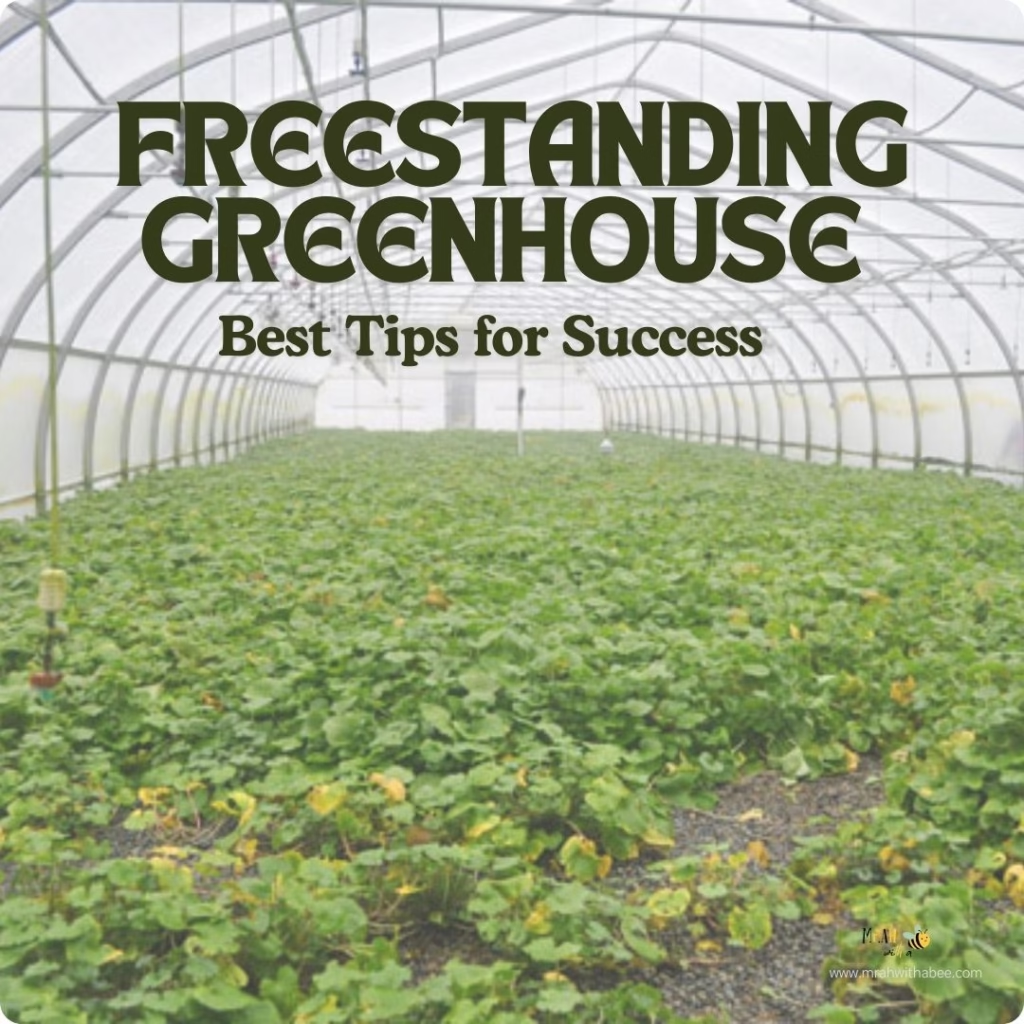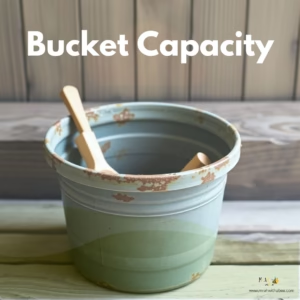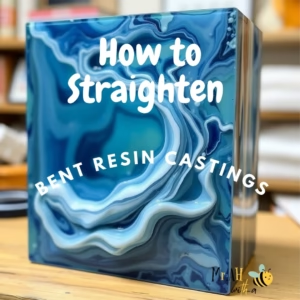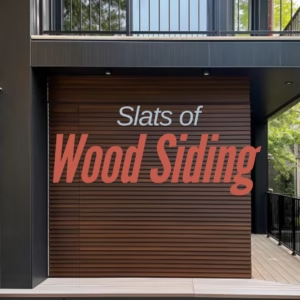The freestanding greenhouse is a self-sufficient, stand-alone structure designed to nurture plants year-round in a controlled environment. Unlike attached greenhouses, they offer greater flexibility in placement and are essential for gardeners seeking to grow a variety of plants. Freestanding greenhouses provide year-round growth, protection from harsh weather, and an extended growing season, allowing for earlier seedling starts in spring and healthier plants into fall and winter. They also maintain consistent temperature and humidity levels, supporting robust growth and serving as a safe haven for delicate plants.
Attached vs. Freestanding Greenhouses
When deciding between an attached or freestanding greenhouse, consider these points:
Attached Greenhouses
Pros:
- Utilization of Existing Structures: Attached greenhouses leverage an existing wall for support, which can reduce the need for additional materials and construction.
- Lower Initial Cost: Since attached greenhouses typically involve a lower upfront investment, they require fewer resources to build, making them more budget-friendly.
- Easy Access to Utilities: Being connected to a home or other structures allows for convenient access to water, electricity, and heating systems, simplifying setup and maintenance.
Cons:
- Limited Size and Placement Options: Potentially limiting the variety and quantity of plants that can be grown, the size of an attached greenhouse is often constrained by the dimensions of the existing structure.
- Dependence on Existing Structures: The greenhouse’s orientation and exposure to sunlight may be less than ideal due to the proximity to the building. Additionally, if the attached structure experiences issues such as leaks or structural problems, it could negatively affect the greenhouse.
Freestanding Greenhouses
Pros:
- Greater Flexibility in Placement: Since freestanding greenhouses can be positioned anywhere on your property, you can choose the ideal location for maximum sunlight exposure and accessibility.
- More Growing Space: These structures typically offer more interior space for planting, making them suitable for larger gardens and diverse plant varieties. This also allows for better organization and layout of growing areas.
- Exposure to Natural Light on All Sides: Being independent means that freestanding greenhouses receive sunlight from all angles, promoting healthier plant growth and reducing shading issues that can occur with attached designs.
Cons:
- Higher Initial Cost: The construction of a freestanding greenhouse generally involves a greater investment in materials and labor compared to attached greenhouses, which can be a barrier for some gardeners.
- Requires Separate Utility Setup: Freestanding greenhouses often need their own water, electricity, and heating systems, which can complicate installation and increase ongoing maintenance costs.
Orientation is vital for a greenhouse’s success, impacting light exposure, temperature regulation, and plant growth. Choosing the right alignment enhances efficiency and plant health by ensuring optimal sunlight and stable internal conditions. Considering the geographical location and seasonal changes maximizes your greenhouse’s benefits, fostering a thriving environment for your plants.
North-South Orientation
- Optimal for Long Greenhouses: Greenhouses located in sunny regions benefit from a north-south orientation. This alignment minimizes the risk of shading and ensures that all plants receive adequate sunlight, allowing for even light distribution throughout the structure.
- Consistent Light Exposure: By positioning the greenhouse this way, you can ensure that plants receive consistent sunlight throughout the day. This encourages healthier growth patterns and minimizes the chances of leggy plants that stretch toward the light.
East-West Orientation
- Ideal for Short Greenhouses: Especially in areas that experience significant seasonal changes, an east-west orientation is best suited for shorter greenhouses. During the winter months when the sun is lower in the sky, this alignment maximizes sunlight exposure.
- Winter Sunlight Maximization: By capturing the morning sun from the east and the afternoon sun from the west, this orientation helps to keep the greenhouse warmer during colder months. Enhancing the growing conditions for winter crops.
Comparing Glazing Materials
The glazing material determines light transmission and insulation:
Benefits
- Aesthetic Appeal: Single-pane glass greenhouses offer a visually appealing design, enhancing the beauty of any garden space.
- High Light Transmission: With 92% light transmission, they allow ample sunlight to reach plants, promoting healthy growth.
Drawbacks
- Energy Inefficiency: These greenhouses are the least energy-efficient option, leading to significantly higher heating costs compared to double-pane or multi-walled polycarbonate greenhouses.
- Potential for Hot Spots: Often requiring additional solutions like shade cloth, northern climates may allow too much light, creating ‘hot spots’ that can damage plants.
Double-Pane Glass Greenhouses
Benefits
- Energy Efficiency: Double-pane glass greenhouses are highly energy efficient, potentially reducing heating costs by up to 50% compared to single-pane models, making them a smart long-term investment.
- Enhanced Insulation: Many double-pane greenhouses feature a Low-E (low emissivity) reflective coating on the inner pane, helping to keep the temperature stable inside. This coating not only reflects heat but also enhances insulation.
Drawbacks
- Higher Initial Cost: One major downside of double-pane glass greenhouses is their higher upfront price, which makes them the most expensive option available.
- Weight Considerations: The added weight of double-pane glass may necessitate stronger framing, complicating installation compared to lighter alternatives.
Multi-Wall Polycarbonate Greenhouses
Benefits
- Outstanding Insulation: By providing insulation similar to that of double-pane glass greenhouses, multi-wall polycarbonate has built-in channels that trap air. This feature helps keep temperatures stable inside the greenhouse.
- Light Diffusion: This material effectively diffuses sunlight, reducing “hot spots” and ensuring even light distribution for plants. Tinted panels can also be installed on the roof to minimize the need for shade cloth, making it ideal for gardeners in sunny, hot areas.
Drawbacks
- Visual Appeal: Although practical, polycarbonate is not as attractive as glass, which may be a factor for those who want their greenhouse to look its best.
- Scratch Susceptibility: Polycarbonate panels are more inclined to scratch compared to glass, which can impact their clarity over time. Careful handling during installation and maintenance is important to prevent damage.
When selecting glazing options for your greenhouse, remember that efficiency and performance depend on factors like location and orientation. Your climate and the types of plants you plan to grow will significantly affect your choice, so explore various options to find the design that best suits your needs.
Ventilation: Key to Plant Health
Effective ventilation is essential for greenhouse efficiency, supplying fresh air, regulating temperature and humidity, and reducing disease risk. Enclosed structures need either a passive or powered ventilation system for optimal airflow.
Passive Ventilation System
A passive ventilation system operates without any mechanical components, meaning it does not use powered fans. Instead, it depends on convection, where hot air rises and escapes through ridge vents, allowing cooler air to enter through intake vents.
Mechanism of Operation
To function effectively, a passive ventilation system requires both ridge vents and intake vents. Ridge vents let hot air escape, while intake vents at the lower side walls allow cool air to replace the rising warm air.
Advantages
One of the primary benefits of passive ventilation systems is their quiet operation, making them ideal for gardeners with greenhouses attached to their homes, where the noise from mechanical fans could be disruptive.
Disadvantages
There are significant drawbacks to ridge vent systems, including an initial cost that can be 3 to 4 times higher than powered ventilation systems. Regular maintenance is essential, as ridge vents must be kept clear of debris and cleaned frequently, and passive systems may be less efficient since air isn’t actively pushed through the greenhouse.
Powered Ventilation System (PVS)
A powered ventilation system (PVS) utilizes a powered fan and intake vents to manage air circulation within a greenhouse effectively.
Mechanism of Operation
The size of the fan system is based on the greenhouse’s cubic footage, aiming for complete air turnover in less than two minutes, ideally under one minute. This rapid air exchange keeps the greenhouse about 10 degrees cooler than a passive system, facilitating better control of temperature and humidity. For optimal performance, the fan should be mounted on the upper section of the wall opposite the intake vents.
Advantages
One of the key advantages of a powered ventilation system is its efficiency in regulating temperature and humidity. The rapid air turnover improves comfort for plants and helps maintain a stable growing environment. Furthermore, these systems can include thermostatic controls that activate the fan when the desired temperature is reached, ensuring consistent conditions.
Disadvantages
Powered ventilation systems provide benefits but come with higher initial costs and reliance on electricity, limiting effectiveness during outages. Regular maintenance is needed for efficiency. A circulating fan is essential for uniform temperatures and humidity. Proper ventilation, whether passive or powered, is crucial for optimal plant growth.
Cooling Strategies for Summer
To help plants thrive in summer, greenhouse gardeners must prevent excessive internal temperatures. Various methods for cooling, often based on budget and greenhouse size, include systems that use water evaporation. Notable options are wet wall systems, portable evaporative coolers, foggers, and humidifiers.
Wet Wall Cooling Systems
Wet wall cooling systems are highly effective for large commercial greenhouses, featuring cooling pads housed in a honeycomb-like aluminum structure that allows air to flow over continuously drenched pads, cooling it before it enters the greenhouse, similar to a radiator. Thermostatically controlled motorized shutters open and close based on temperature, while powered fans on the opposite wall facilitate air movement. However, these systems are more complex and costly to install due to the plumbing required for water recirculation, making them more common in larger commercial setups.
Portable Evaporative Coolers
Portable evaporative coolers are popular among hobbyist greenhouse growers. These affordable, self-contained units use a cooling pad to draw in air and push it over a wet surface, creating an evaporative cooling effect. They can be connected to a garden hose with a float valve to maintain water levels. For optimal results, place them near a greenhouse entry or fresh air intake vent. Thermostatically controlled and easy to store, these coolers effectively lower temperatures during hot summer months.
Foggers and Humidifiers for Cooling
For small hobby greenhouses, foggers and humidifiers are effective for evaporative cooling. A fogger emits a fine mist that can be positioned behind a circulating fan to spread cooled air, while a humidifier can blow cool, moist air across the space. Both release tiny droplets that evaporate quickly, lowering the temperature without saturating the plants.
Mist Systems in Greenhouses
Many gardeners ask about mist systems for cooling greenhouses. While primarily for irrigation, these systems can provide some cooling, though larger water droplets may wet plants and cause moisture-related issues in hot months. Maintaining ideal temperatures is crucial for healthy growth. Whether using a wet wall system for large greenhouses or a portable evaporative cooler for small spaces, evaporative cooling is the most effective method for helping plants thrive in high temperatures.
Choosing Shade Cloth for Freestanding Greenhouse
Shade cloth protects greenhouse plants from intense sunlight and keeps the environment cooler in summer. Typically offering 50% to 70% shading, higher percentages benefit structures exposed to direct sunlight, like south-facing greenhouses. It reduces heat buildup and plant stress, is custom-sized with rings every four feet for easy hanging, and helps gardeners create an optimal growing environment.
Aluminet Shade Clot
Aluminet is a reasonable and effective shade cloth option for greenhouses. It shades sunlight and reflects heat and can be hung on the interior, flush against walls or ceilings. One of its main benefits is its ability to cool the greenhouse by reflecting heat away from the structure, making it a cost-effective choice for hobbyists. Since it hangs inside, it does not detract from the greenhouse’s natural beauty, appealing to many gardeners. For freestanding greenhouses, which are often fully exposed, Aluminet offers excellent protection against heat buildup and excessive sunlight, creating a stable growing environment for plants.
Black Nylon Shade Cloth
Using hooks for the grommets, black nylon shade cloth can be hung on the exterior of the greenhouse. While it effectively filters light and is similarly priced to Aluminet, its black color does not reflect heat, meaning the greenhouse may still retain warmth. Additionally, exterior shade cloth can affect the greenhouse’s aesthetics and requires more maintenance due to dirt and dust accumulation.
Guide Wire Shade Cloth Systems
Motorized shade cloth systems tend to be expensive and are mainly used in large commercial greenhouses. These systems use guide wires to hold the shade cloth, which can be adjusted with a small motor, letting growers open or close it like a shower curtain. There are also manual guide wire systems, but a downside is that the shade cloth doesn’t sit flush against the walls or ceiling, allowing some heat to enter the greenhouse. Despite this, these systems are effective for shading specific areas, such as protecting seedlings or light-sensitive plants from intense sunlight.
Artificial Lighting Solutions
Many greenhouse growers are incorporating artificial light sources to either provide supplementary lighting or extend the photoperiod. Before investing in a lighting system, it’s essential for growers to assess which type will best fulfill their needs.
LED Lights: Energy-Efficient and Long-Lasting
LED lights are a popular choice for freestanding greenhouses due to their energy efficiency and long lifespan. They consume significantly less electricity, resulting in lower energy bills, and release minimal heat, reducing the risk of overheating plants. Types of LED lights include:
- Full Spectrum LEDs: Mimic natural sunlight and support all stages of plant growth.
- Red and Blue LEDs: Enhance photosynthesis; red light promotes flowering while blue light supports vegetative growth.
- Incandescent LED Bulbs: Provide warm light, suitable for decorative applications in a greenhouse.
Fluorescent Lights: Affordable and Suitable for Small Setups
Fluorescent lights are an affordable, easy-to-install option for small freestanding greenhouses, providing adequate light for seedlings and young plants, including T5, T8, and compact fluorescent bulbs.
- T5 fluorescent tubes are efficient four-foot lights that consume 54 watts, available in warm (3000 K) and cool (6400 K) options. They provide more red light for flowering and blue light for vegetative growth. Many fixtures hold multiple bulbs, making T5s a cost-effective choice for hobbyist greenhouse growers.
- T8 fluorescent tubes are larger and less efficient than T5s but still support plant growth. At one inch in diameter and four feet long, they consume 32 watts and come in warm and cool spectrums. Popular for their cost-effectiveness, T8s are compatible with existing fixtures and ideal for hobbyists.
- Compact fluorescent lamps (CFLs) are versatile lighting options that fit standard fixtures, making them easy to integrate into various setups. They provide a practical solution for hobbyist growers, particularly in smaller spaces or for specific plants that require less intense light.
High-Intensity Discharge (HID) Lights
- Metal halide lighting is a high-intensity discharge (HID) option ideal for greenhouses, providing more intensity than fluorescents for light-demanding plants. Available in 400, 600, or 1000 watts, these lights emit a white or blue spectrum for vegetative growth. They are essential despite producing significant heat and higher operating costs.
- High-pressure sodium (HPS) lights are high-intensity discharge (HID) options available in 400, 600, and 1000 watts. They emit significant red spectrum light, ideal for fruiting and flowering plants. HPS systems require a ballast and reflector, and a convertible ballast allows switching from metal halide to HPS bulbs for optimal growth.
Dual-Arc HID Lights
Conclusion
In conclusion, a freestanding greenhouse offers an ideal environment for various plants by ensuring optimal light, temperature, and humidity control. This description highlights the benefits of different lighting options, including LED, fluorescent, and high-intensity discharge systems, for healthy plant growth. By understanding these features, growers can create a productive environment that enhances plant health and maximizes the greenhouse’s potential.
FAQs
- What is the description of a freestanding greenhouse?
A freestanding greenhouse is a standalone structure for growing plants in a controlled environment. - How does a freestanding greenhouse differ from an attached greenhouse?
A freestanding greenhouse is independent, while an attached one connects to a building and shares a wall. - What materials are commonly used in freestanding greenhouse construction?
Aluminum or steel frames with glass or polycarbonate glazing are commonly used. - What are the typical sizes of freestanding greenhouses?
Sizes range from small (6×8 feet) to large (20×40 feet or more), depending on needs. - What is the optimal orientation for a freestanding greenhouse?
North-South is best for long greenhouses; East-West suits shorter ones in low-light areas. - How does ventilation work in a freestanding greenhouse?
Roof vents, louvers, and exhaust fans maintain airflow and reduce humidity. - What are the foundation options for a freestanding greenhouse?
Concrete slabs, gravel bases, or treated wood frames provide stability. - What heating systems are used in freestanding greenhouses?
Electric heaters, propane systems, or passive solar heating are common. - What glazing materials are available for freestanding greenhouses?
Glass offers clarity, while polycarbonate provides durability and insulation. - How is maintenance performed for freestanding greenhouses?
Clean glazing, inspect structures, ensure ventilation, and monitor for pests.
Check out more articles related to DIY, click the link below
Thanks for reading, for more interesting articles, visit our homepage.






